




Like its cousin broccoli, cauliflower is a cruciferous vegetable with florets that grow on top of a thick stem. However, it has a mild, slightly nutty taste, in contrast to broccoli’s more bitter flavor. Most supermarkets carry the white variety, but cauliflower can be found in a rainbow of colors, including green, orange, and purple.
While a cup of raw, chopped cauliflower has just 100 calories, it is rich in important nutrients including vitamins C and K, and folate and minerals calcium, iron, potassium, and magnesium. The compounds that give cauliflower its unique taste and smell also offer health benefits, including a reduced risk of developing certain types of cancer.
Cauliflower can be prepared in so many ways, and is a popular stand-in for rice, potatoes, and even chicken

wings and steak! Instead of relegating cauliflower to side-dish status, try grating, mashing, puréeing, steaming, or roasting it to create a center-stage entrée—the options are endless! ●
Find lots of creative ways to cook with cauliflower at tasteforlife.com/cauliflower
SELECTED SOURCES “The
guide to cruciferous vegetables” by
Academy of Nutrition and Dietetics, www.EatRight.org, 7/20 • “Cauliflower,” SNAP-ed Connection, www.snaped.fns.usda.gov • “Cauliflower: The new nutrition superstar,” www.MayoClinicHealthSystem.org, 2/27/18 • “Health benefits of cauliflower” by Angela Nelson, www.WebMD.com, 6/14/21



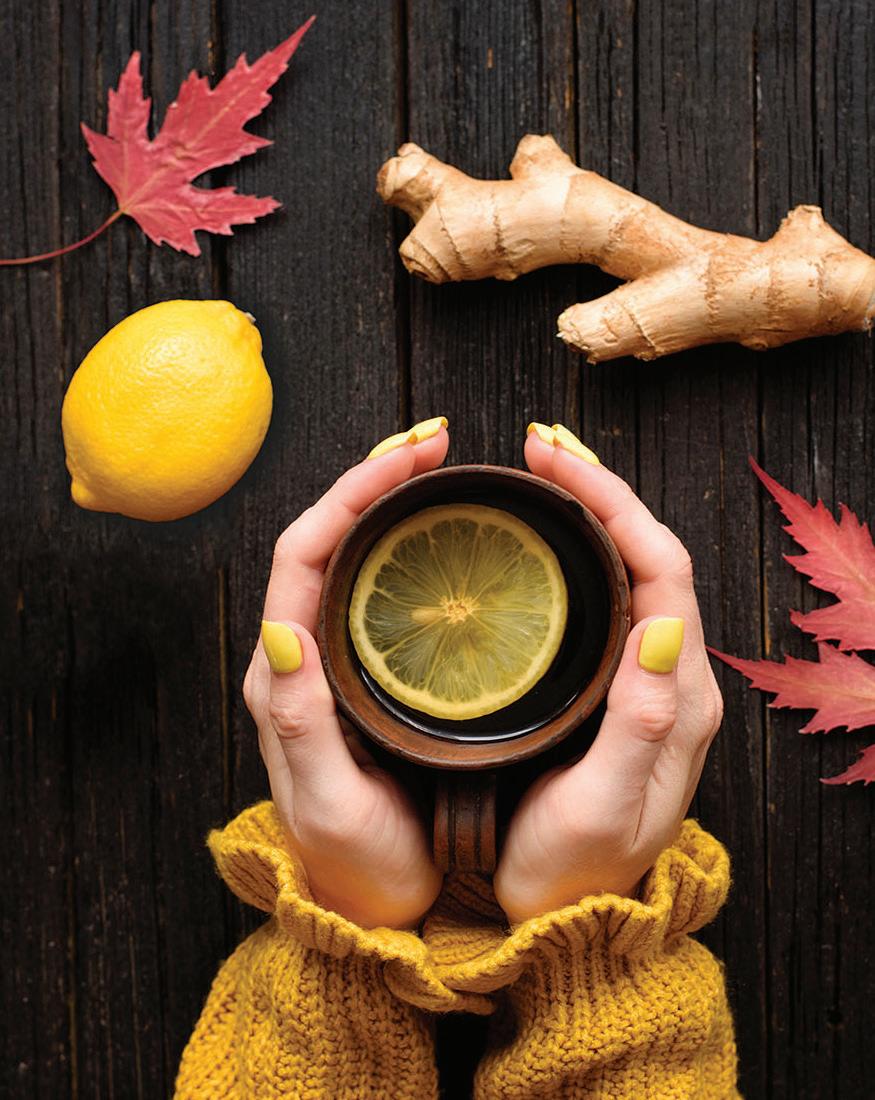

After all we’ve been through the past few years, it’s time to look forward to celebrating all the traditions and comforts winter has to offer.
Nothing compares to coming in from outdoors in December and being greeted by the aroma of cinnamon wafting from the kitchen. One of the favorite scents of winter, cinnamon adds flavor to baked goods and warm beverages. But it’s also being touted for its many medicinal properties. See page 24 to learn what cinnamon can do for your health.
Holiday baking fills the pages of our food feature this month, beginning on page 12, and we have the lowdown on cooking and baking with alternatives to sugar (page 18). You’ll also find delicious recipes for hearty root vegetables (page 26) and tasty buttermilk biscuits (page 5)—and info on the nutritional powerhouse cauliflower (page 2).
Of course, along with holiday cheer, winter also brings colds and flu. We’ve got you covered on the winter-illness front with tips on keeping your immune system strong to fight off any bugs that come your way—and on recovering as quickly as possible if you do get sick (page 16). Also see the cold- and flu-fighting strategies in our “healthy family” department on page 20.
The season calls for festive drinks, and on page 28 we discuss the pros and cons of alcoholic beverages and offer some “mocktail” ideas, just as celebratory as cocktails but without the downsides.
If the holiday whirls of shopping, wrapping, cooking, and visiting— and winter in general—have you feeling worn out before you begin, turn to page 22 for ways to rev up your energy level.
Whatever your celebrations, we wish you a lustrous holiday season filled with family, friends, good cheer, and good health—
Contributing Writers
Mary Ann O’Dell MS, RDN Sally Karlovitz CN
Mary Ann O’Dell, MS, RDN
Chief Content Officer and Strategist
Lynn Tryba (Lynn.Tryba@TasteforLife.com)
Contributing Editors
Lisa Fabian, Rich Wallace
Associate Editor
Kelli Ann Wilson
Art Director Michelle Knapp
Custom Graphics Manager Donna Sweeney
Executive Director of Business Development Amy Pierce Customer Service 800-677-8847 CustomerService@TasteforLife.com

Client Services Director - Retail Judy Gagne (x128)


Client Services Director - Advertising & Digital Ashley Dunk (x190)
Executive Director of Retail Sales and Marketing Anna Johnston (Anna.Johnston@TasteforLife.com)

Retail Account Manager
Allen Gold 800-677-8847 (x111)
Founder and Chief Executive Officer T. James Connell
Taste for Life® (ISSN 1521-2904) is published monthly by CCI, 155 Washington Street, Keene NH 03431, 603-283-0034 (fax 603-2830141); © 2022 Connell Communications, Inc. All rights reserved. Subscription rates: $29.95. This magazine is not intended to provide medical advice on personal health conditions, nor to replace recommendations made by health professionals. The opinions expressed by contributors and sources quoted in articles are not necessarily those of the editor or the publisher. Advertisers and advertising agencies assume liability for all content of advertising and for any claims arising therefrom. Information appearing in Taste for Life may not be reproduced in whole or in part without express permission of the publisher.
Creative and Sales Offices
155 Washington Street, Keene NH 03431 603-283-0034
Printed in the U.S. on partially recycled paper. The inks used to print the body of this publication contain a minimum of 20%, by weight, renewable resources.


a note on recipes
Nutritional analysis from Edamam. Nutritional values vary depending on portion size, freshness of ingredients, storage, and cooking techniques. They should be used only as a guide. Star ratings are based on standard values (SVs) that are currently recommended:
Extraordinary (50 percent or better), ★★★★ Top source,
Excellent source, ★★ Good source, ★ Fair source
*These statements have not been evaluated by the FDA. These products are not intended to diagnose, treat, cure, or prevent any disease.
35 min prep time makes 8 biscuits

From the Taste for Life test kitchen
2 c all-purpose flour 2½ tsp baking powder ¾ tsp salt 6 Tbsp cold unsalted butter, cut into small pieces ¾ c buttermilk
1. Preheat oven to 425˚.
2. In a food processor bowl, add flour, baking powder, and salt. Process for a few seconds to combine. Add cold butter pieces. Pulse until butter is incorporated into dry ingredients. Add buttermilk and pulse until dough begins to stick together in clumps.
3. Turn dough onto a floured surface. Form dough into one lump. With a rolling pin, roll dough out into a ½-inch-thick rectangle. Fold dough in half and roll out again into a ½-inch-thick rectangle. Fold dough in half one last time and roll out, this time to a ¾-inch thickness.
4. With a 2½-inch biscuit cutter, cut dough into 8 rounds, rolling out scraps and cutting out biscuits as needed to get 8 rounds. Place rounds on a parchment paper-lined baking sheet. Be sure rounds aren’t touching each other on baking sheet.
5. Bake for 15 to 18 minutes, until biscuits are golden.
Per serving: 199 Calories, 4 g Protein, 25 g Carbohydrates, 1 g Total sugars (0 g Added sugars), 1 g Fiber, 9 g Total fat (5 g sat), 158 mg Sodium, ★★ Vitamin B1 (thiamine), Folate, Phosphorus, ★ Vitamin B2 (riboflavin), B3 (niacin), Calcium
Yoga “actually makes your brain work better,” according to the Harvard Medical School newsletter HealthBeat. That’s because the practice spurs new connections among brain cells, leading to improvements in brain structure and function—and improved cognition.

“Yoga strengthens parts of the brain that play a key role in memory, attention, awareness, thought, and language,” HealthBeat reported. “Think of it as weightlifting for the brain.” The authors noted that yoga has been shown to improve reasoning, decision making, memory, learning, and other executive functions.
A new meta-analysis found that vitamin D may have potential for helping to treat depression. Researchers analyzed results from 41 studies from around the world and concluded that supplemental vitamin D had a positive effect on symptoms of depression. “Future research should investigate possible benefits of augmenting standard treatments with vitamin D in clinical depression,” they wrote.
Foods rich in vitamin D include fatty fish such as salmon, tuna, and sardines; egg yolks; mushrooms; and D-fortified milks, orange juice, and cereals.
SOURCES “The effect of vitamin D supplementation on depressive symptoms in adults: A systematic review and metaanalysis of randomized controlled trials” by T. Mikola et al., Critical Reviews in Food Science and Nutrition, 7/11/22 • “Vitamin D supplementation seems to alleviate depressive symptoms in adults,” University of Eastern Finland, 8/12/22

Hearing loss affects some 13 percent of adults over the age of 18, according to the National Interview Health Survey, and that figure doubles for people aged 65 and older.

Sometimes mistaken for dementia (and in the very young, for autism), hearing loss in adults has many causes, including the effects of aging on the ear; hypertension (high blood pressure); ear damage from loud noise, illness, or infection; some prescription medications; and inherited disorders.
It may be from years on the job in a loud environment or a one-evening blast of noise at a rock concert. Either way, once the tiny fibers in your ear become damaged, hearing loss results—and it’s permanent.
Whatever your age, there are actions you can take to protect your hearing. The audiology team at Johns Hopkins Medicine recommends these tips:
n Have your hearing tested, so you have a baseline to work with later in life.
n Wear protective gear (earplugs, noise-abating headphones) when you’re in a noisy environment.
n Monitor the volume levels of your devices (TV, radio, smart phone, etc.).
Turn the volume of your TV, for example, to the point where you don’t have to strain to hear a program—but not so high that you can hear it from another room.
The US Food and Drug Administration (FDA) recently issued a new rule designed to “improve access to safe, effective, and affordable hearing aids for millions of Americans,” according to an agency news release. It noted that consumers 18 and older with mild to moderate hearing impairment will be able to buy hearing aids “from stores or online retailers without the need for a medical exam, prescription or a fitting adjustment by an audiologist.”
The rule for over-the-counter hearing aids went into effect in mid-October 2022, and consumers should begin to see them more often in retail and online outlets.
—Nan FornalSELECTED SOURCES “4 ways to protect your hearing”; “Types of hearing loss,” Johns Hopkins Medicine, www.HopkinsMedicine.com • “Autism, auditory processing disorder and your child’s hearing health” by D. Clason, www.HealthyHearing.com, 7/24/19 • “FDA finalizes historic rule enabling access to over-the-counter hearing aids for millions of Americans,” US Food and Drug Administration, www.FDA.gov, 8/16/22 • “Hearing difficulties among adults: United States, 2019” by J.H. Madans et al.; “Listen up! Protect your hearing,” US Centers for Disease Control and Prevention, www.CDC.gov • “Hearing loss and dementia: How are they related?” by T. Ehrenfeld, www.HealthyHearing.com, 8/3/21

Enjoy ultra-rich, deep nourishment for skin that craves intensive moisture. This creamy formula with essential fatty acids and pure plant extracts immediately comforts dry skin, absorbing to a non-greasy finish. Made with viola tricolor, chamomile, and calendula extracts. It immediately leaves skin feeling nourished and comforted with a silky feel.

Take advantage of a better source of caffeine with this boost. Hand-picked and sourced from farms certified by the Rainforest Alliance, this premium source of energy contains the entire coffee berry giving you the antioxidant power other caffeine sources skip! This boost can help support cognitive and exercise performance, increase antioxidant activity, and increase functional energy.*
Remedy offers the original no sugar and no alcohol kombucha. Each brew contains a gut loving blend of live, active cultures with organic acids and antioxidants. These small batch, long-age brewed kombuchas can live in or out of the refrigerator. Only 5 calories per can. Available in fresh, fruity flavors.


Relax and recharge with this honey vanilla flavored powder drink mix.* Supplies 200 mg each of magnesium and L-theanine for stress relief.* Just stir with water, let fizz, and drink to support a sense of calm.*
This organic vitamin D3 is derived from 100% plant-based sustainable algae.* Vitamin D supports immune and bone health.* D3 is combined with K2 to promote bone strength, helping with proper calcium absorption.* Supplies 5000 IU D3 and 90 mcg K2 MK-7, plus shiitake mushroom and prebiotic fiber.


This effective organic face serum is formulated with caffeine and vitamin C to nourish, hydrate, and protect. Rich in vitamin C, antioxidant-rich coffee, and rosehip oils it helps fade dark spots and scars while brightening the complexion. This serum is 100% oil based and works by locking in hydration and forming a protective seal over skin.

These delicious, zero-sugar gummy chews are made with research-backed borage oil and biotin for healthy hair and skin.* GLA from borage oil promotes a healthy balance of fats in the skin, and biotin helps support healthy skin and hair growth.* These chews have a refreshing strawberry lemonade flavor with no added sugar.

Recipe courtesy Herb Pharm Mint and chocolate are a classic winter combination, the perfect sip after playing in the snow. This lightly sweetened hot chocolate is pungent and highly aromatic, thanks to Peppermint Spirits, a proprietary blend of Peppermint leaf extract and essential oil. Each serving yields about 6 ounces. INGREDIENTS:
INSTRUCTIONS:
1 In a small pan over low heat, whisk together the milk, cacao or cocoa powder, maple syrup, and salt. Bring it just to a simmer, then immediately remove from heat. Do not let it boil.


2 Pour into a mug. Add 1 full squeeze of the dropper bulb of Peppermint Spirits and stir well to combine. 3 Serve immediately.
TIPS:
Adjust the amount of maple syrup to taste. If your milk is sweetened, reduce the amount of maple syrup. Serve with a sprinkle of cocoa powder on top, if desired.
†One full squeeze of the dropper equals 0.7 ml; it provides approximately 1 serving of Peppermint Spirits.







Make your long-term health a priority with the Kyolic ® Aged Garlic Extract™ formula that fits your unique needs ...starting today.

We have over 20 targeted wellness formulas that start with organically grown garlic. Then our proprietary, natural aging process concentrates the medicinal essence, enhances the nutrient compounds, and removes the odor.
Strong supplements for heart, immunity and overall wellness that are gentle on the stomach so that you can take them every day and live tomorrow to the fullest.
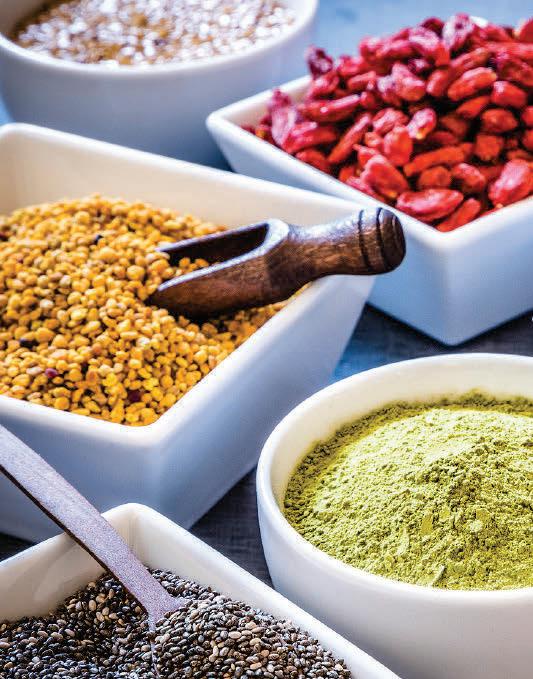

50th Anniversary Sweepstakes! A winner every month. Enter at kyolic.com
Is it really odorless? Find out for yourself. Request a sample at Kyolic.com/sample-request Promo Code: KYOLIC22



Turn on the oven and get ready to make some holiday dishes! From spiced gingerbread cookies to caramelized pumpkin bread to roasted turkey with pomegranate sauce and more, your gatherings will be festive with these seasonally inspired foods.
90 min prep time serves 10

From Half the Sugar, All the Love: 100 Easy, Low-Sugar Recipes for Every Meal of the Day by Jennifer Tyler Lee and Anisha Patel, MD, MSPH ($22.95, Workman Publishing Co., 2019)
Nonstick cooking spray 1¾ c all-purpose flour 2 tsp ground cinnamon
1½ tsp baking powder 1 tsp ground ginger ½ tsp baking soda ½ tsp salt ½ tsp ground nutmeg ¼ tsp ground cloves
1 c canned pumpkin purée*
½ c mashed very ripe banana (about 1 medium banana)
¹⁄³ c maple syrup
½ c vegetable oil
¼ c whole-milk plain Greek yogurt
2 tsp pure vanilla extract
2 large eggs
1. Preheat oven to 350º. Line an 8½×4½-inch loaf pan with parchment paper, leaving about 2 inches of overhang on each side. Coat with cooking spray.
2. In a large bowl, whisk together flour, cinnamon, baking powder, ginger, baking soda, salt, nutmeg, and cloves. Set aside.
3. Combine pumpkin purée and mashed banana with maple syrup in a medium saucepan over medium heat. Cook, stirring frequently, until slightly darkened and caramelized, 5 to 7 minutes. Transfer to another large bowl and let cool completely, 15 minutes.
4. Add oil, yogurt, vanilla, and eggs to cooled pumpkin mixture and whisk vigorously to combine.
5. Add flour mixture to pumpkin mixture and stir gently to combine. (Batter will be thick.)
6. Pour batter into prepared loaf pan. Bake until a toothpick inserted into center comes out clean, 55 minutes to 1 hour.
7. Cool in pan for 20 minutes, and then remove bread from pan and transfer to a wire rack. Let cool for at least 15 minutes longer before cutting into 10 slices and serving.
*Be sure to use canned unsweetened pumpkin purée, not pumpkin pie filling.
Kitchen Note: Caramelizing the pumpkin and banana with a little maple syrup brings out their natural sweetness and enhances the delicious flavors with considerably less added sugar. Greek yogurt adds a bit of tang. The bread will keep, tightly wrapped in plastic wrap, in the refrigerator for up to 3 days or in the freezer for up to 1 month.
Per serving: 243 Calories, 4 g Protein, 28 g Carbohydrates, 9 g Total sugars (6 g Added sugars), 1 g Fiber, 13 g Total fat (1 g sat), 197 mg Sodium, ★★ Vitamin B2 (riboflavin), ★ Vitamin B1 (thiamine), E, Folate, Phosphorus

From The Complete Autumn & Winter Cookbook by America’s Test Kitchen ($34.99, America’s Test Kitchen, 2021)
3 c (15 oz) all-purpose flour
¾ c packed (5¼ oz) dark brown sugar
1 Tbsp ground cinnamon
1 Tbsp ground ginger
¾ tsp baking soda
½ tsp ground cloves
½ tsp table salt
12 Tbsp unsalted butter, melted
¾ c light molasses
2 Tbsp milk
45 min + 90 min chill and cool time makes about 20 cookies
1. Process flour, sugar, cinnamon, ginger, baking soda, cloves, and salt in a food processor until combined, about 10 seconds. Add melted butter, molasses, and milk. Process until a soft dough forms and no streaks of flour remain, about 20 seconds, scraping down sides of bowl as needed.
2. Spray counter lightly with a baking spray with flour, transfer dough to counter, and knead until dough forms a cohesive ball, about 20 seconds. Divide dough in half. Form each half into a 5-inch disk, wrap disks tightly in plastic wrap, and refrigerate for at least 1 hour or up to 24 hours.
3. Adjust oven racks to upper-middle and lowermiddle positions and heat oven to 350º. Line 2 baking sheets with parchment paper. Working with 1 disk of dough at a time, roll ¼-inch thick between 2 large sheets of parchment. (Keep second disk of dough refrigerated while rolling out first.) Remove top piece of parchment. Using a 3½-inch cookie cutter, cut dough into shapes. Peel away scraps from around cookies and space shapes ¾-inch apart on prepared sheets. Repeat rolling and cutting steps with dough scraps.
4. Bake cookies until puffy and just set around edges, 9 to 11 minutes, switching and rotating sheets halfway through baking. Let cookies cool on sheets for 10 minutes, and then transfer to a wire rack. Let cookies cool completely before serving. (Cookies can be stored in an airtight container at room temperature, with a sheet of parchment or waxed paper between each layer, for up to 3 days.)
Kitchen Note: These cookies are soft, not crunchy, and brimming with the flavors of ginger and molasses. Depending on your cookie cutter dimensions, all of the cookies may not fit on the sheets and a second round of baking may be required. You can decorate these cookies with your favorite icing, if desired.
Per serving (1 cookie without icing): 188 Calories, 2 g Protein, 30 g Carbohydrates, 15 g Total sugars (15 g Added sugars), 1 g Fiber, 7 g Total fat (4 g sat), 110 mg Sodium, ★ Vitamin B1 (thiamine), Folate, Iron, Magnesium

From The Complete Autumn & Winter Cookbook by America’s Test Kitchen ($34.99, America’s Test Kitchen, 2021)
2¼ c (11¼ oz) all-purpose flour
1½ tsp ground cinnamon
1½ tsp ground ginger
1 tsp baking soda
½ tsp ground cloves
¼ tsp ground allspice
¼ tsp black pepper
¼ tsp table salt

75 min prep time + cool time makes 24 cookies
12 Tbsp unsalted butter, softened ¹⁄³ c packed (2¹⁄³ oz) dark brown sugar ¹⁄³ c (2¹⁄³ oz) granulated sugar, plus ½ c for rolling
1 large egg yolk
1 tsp vanilla extract
½ c mild or robust molasses
1. Adjust oven rack to middle position and heat oven to 375º. Line 2 baking sheets with
parchment paper. Whisk flour, cinnamon, ginger, baking soda, cloves, allspice, pepper, and salt together in a bowl.
2. Using a stand mixer fitted with a paddle, beat butter, brown sugar, and the ¹⁄³ cup granulated sugar on medium speed until pale and fluffy, about 3 minutes. Reduce speed to medium-low; add egg yolk and vanilla; and beat until combined, about 30 seconds. Beat in molasses until incorporated, about 30 seconds, scraping down bowl as needed. Reduce speed to low and slowly add flour mixture until combined, about 30 seconds (dough will be soft). Give dough a final stir by hand to ensure no flour pockets remain.
3. Spread remaining ½ cup granulated sugar in a shallow dish. Working with 2 tablespoons dough at a time, roll dough into balls with your dampened hands, and then roll in sugar to coat; space dough balls 2 inches apart on prepared sheets. (Dough balls can be frozen for up to 1 month; bake frozen dough balls in 300º oven for 30 to 35 minutes.)
4. Bake cookies, 1 sheet at a time, until edges are set but centers are still soft, puffy, and cracked (cookies will look raw between cracks and seem underdone), 10 to 12 minutes, rotating sheet halfway through baking. Let cookies cool on sheet for 10 minutes. Serve warm or transfer to a wire rack and let cool completely.
Kitchen Note: You can use light or dark molasses; the dark variety will have a stronger presence. (Avoid blackstrap molasses, which can be overpowering and bitter.) When rolling the balls of dough, dip your hands in water to prevent sticking; this also helps the granulated sugar adhere to the dough balls. For the best texture and appearance, bake the cookies one sheet at a time and pull them from the oven when they still look substantially underdone. (They will continue to bake and harden as they cool, with the insides remaining soft and moist.)
Per serving (1 cookie): 135 Calories, 1 g Protein, 19 g Carbohydrates, 10 g Total sugars (10 g Added sugars), 0 g Fiber, 6 g Total fat (4 g sat), 74 mg Sodium, ★ Vitamin B1 (thiamine), Folate
From The Christmas Movie Cookbook by Julia Rutland ($21.99, Simon Element, 2022)
3 Tbsp kosher salt, divided
3 Tbsp dark brown sugar
1 Tbsp dried sage
2 tsp freshly ground black pepper
1 tsp paprika
1 (12- to 14-lb) whole fresh turkey
2 c water
2 Tbsp extra-virgin olive oil
Fresh rosemary and sage leaves, for garnish
Orange slices, for garnish
Pomegranate arils, for garnish (optional)
Pomegranate Sauce (recipe follows)
1. In a small bowl, combine salt, brown sugar, sage, pepper, and paprika.
2. Remove giblets and neck from turkey; reserve for other uses or discard. Place turkey in a rimmed pan and pat dry with paper towels. Loosen skin from breast and thighs without detaching or tearing skin.
3. Spread 2 tablespoons of the salt mixture under the turkey’s skin. Sprinkle about 2 teaspoons of salt mixture inside the turkey’s cavity. Spread remaining salt mixture over entire turkey. Turn breastside down in pan. Cover with plastic wrap and refrigerate for 12 to 24 hours.
4. Uncover turkey and turn it breast side
up. Spread any salt mixture in bottom of pan over top of turkey. Return to refrigerator uncovered (this will dry out skin, allowing it to crisp well when roasting), and chill for an additional 12 to 24 hours.
5. Remove turkey from the refrigerator and let stand at room temperature for 1 hour. Preheat oven to 450º. Place a rack in lower third of oven and remove any upper racks.
6. Discard any salt or liquid from bottom of pan (it is not necessary to wipe any remaining salt from turkey). Place turkey, breast-side up, on a roasting rack in a roasting pan. Pour 2 cups of water in bottom of pan. Brush turkey with the olive oil.
7. Transfer pan to oven and roast for 30 minutes. Reduce oven temperature to 350º. Cover breast with aluminum foil and continue to roast until a meat thermometer inserted into thickest part of thigh registers 165º, about 2½ to 3 hours. Remove from oven and tent with aluminum foil. Let stand for 30 minutes before carving (turkey will continue to cook).
8. Garnish turkey with rosemary and sage leaves, orange slices, and pomegranate arils, if desired. Serve with Pomegranate Sauce.
Kitchen Note: To avoid a “turkastrophe,” do not overcook the bird, and use a meat thermometer to monitor the internal temperature. Brining is a technique often used to infuse meats with flavor and moisture. While wet brining works well for small cuts of meat, it’s awkward and possibly unsafe to soak an entire turkey,
since the solution must be kept below 40º. Dry brining utilizes all the sweet-and-salty benefits without the liquid. Fresh turkeys are ideal; otherwise, thawing time must be built into your schedule if using a frozen one.
Per serving: 506 Calories, 66 g Protein, 13 g Carbohydrates, 10 g Total sugars (4 g Added sugars), 1 g Fiber, 20 g Total fat (5 g sat), 875 mg Sodium, ★★★★★ Vitamin B3 (niacin), B6, B12, Phosphorus, Zinc, ★★★★ Vitamin B2 (riboflavin), ★★ Magnesium, ★ Vitamin B1 (thiamine), Iron, Potassium
From The Christmas Movie Cookbook by Julia Rutland ($21.99, Simon Element, 2022) 1½ c pomegranate juice 1 c low-sodium chicken broth or pan drippings from turkey

³ c white balsamic vinegar 2 Tbsp light or dark brown sugar
³ c water 2 Tbsp cornstarch ¼ tsp freshly ground black pepper

Fine sea salt, to taste
1. In a saucepan, combine pomegranate juice, broth, vinegar, and brown sugar.
2. Bring to a boil, reduce heat to medium, and simmer for 10 minutes until reduced by about one third.
3. In a small bowl, stir together water and cornstarch. Stir cornstarch mixture into pomegranate mixture. Bring to a boil; boil 1 minute or until thickened.
4. Stir in pepper and add salt to taste.
During cold & flu season, it seems like everyone gets sick . . . but it doesn’t have to be that way! To protect your body, go beyond diet and exercise to be proactive in your approach to support optimum health and immunity.
Preventing a cold or the flu can be easier than getting rid of it once you do get sick. To keep your immune system strong and fight off infections, remember these key steps.
Control Stress. Stress can weaken your immune system, so stress reduction techniques including exercise and getting adequate rest can help your body handle stress. Adaptogen herbs, such as ashwagandha, help balance out the effects of stress in the body, helping your body adapt to stress better and reducing the negative effects of stress.
Boost Immunity with Herbs. Time-tested herbs
known to have antiviral and immune support activity include garlic, echinacea, elderberry, and olive leaf. Add bee propolis for its antimicrobial action.

Enhance with C & D. Vitamin C is an essential nutrient for immune health. It is a potent antioxidant that is necessary for normal white blood cell function (a component of the immune system). Vitamin C has antiviral properties, making daily intake essential for healthy immunity. Vitamin D plays an important role in strengthening your body’s defenses to fight invading viruses and bacteria. One study found that people taking vitamin D had less upper respiratory tract infections than those who were deficient in vitamin D.
Emergen-C
Vitamin C 1000 mg Drink

Daily immune support.*
Flavored fizzy drink mix.
With antioxidants, B vitamins, and electrolytes.
Source Naturals Wellness Formula

Advanced immune support formula.*
Blend of essential core nutrients plus time-tested herbs.
Includes echinacea, elderberry, olive leaf, and more.
Sometimes you can fight hard, but still get sick. What do you do now? Fight and nurture . . . boost your immune system while giving your body some rest and comfort.
Rest. Never is there a time when more rest is needed than when you are sick. Rest allows the body to recuperate faster. This is especially critical for children who are often active even when they are sick. Quiet activities and extra nighttime rest will help sick bodies recover quicker.
Drink plenty of fluids. Preventing dehydration is key during illness, both for children and adults. Encourage high vitamin C pure fruit juice, herbal teas,
Herbs Etc.

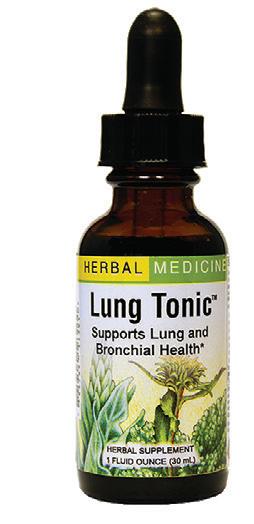
Supports lung and bronchial health.*
Includes mullein, horehound, and grindelia, plus other herbs.
Available in softgel or liquid extract form.
coconut water, and pure water intake throughout the day. Add soups and broth for warmth and comfort.
Keep up the Fight. Keep taking the nutrients and herbs mentioned earlier to help boost the immune system and fight infection. This is still important to help you get over the illness quicker.
Soothe Symptoms Naturally. Look for natural formulas designed to ease the common symptoms of colds, including sore throat and cough. Honey and homeopathic ingredients work well to soothe sore throat and ease cough, while mullein and horehound act as expectorants to help clear the lungs. ●

For cough and chest congestion.*
Multi-symptom formula for dry and productive cough.*
Natural homeopathic formula combined with real honey.
For adults and children 2 years and up.

Sweet treats are a sign of the season, but they can be loaded with sugar, which is linked to inflammation, autoimmune conditions, increased diabetes risk, and more, especially when consumed in large amounts. When making your holiday favorites this year, natural sweeteners in small amounts can be a healthier alternative. Here are some options to consider.
Agave syrup Agave is very sweet—about 84 percent fructose.
Coconut sugar Adds texture and color but does not taste too strongly of coconut.



Date sugar Highly absorbent; made by crushing dried dates into a powder.

Honey Syrupy liquid made by bees from flower nectar; flavor varies based on bees’ diets.


Maple syrup Pure maple syrup is made by boiling down sap from maple trees; available in different grades.

Monk fruit sweetener
About 100 times sweeter than sugar; some people report a bitter taste.
Stevia Made from the stevia plant; about 350 times sweeter than sugar.

Xylitol Naturally occurring sugar alcohol; may cause GI distress for some individuals; toxic to dogs.
Extracted from the agave plant, so it’s a natural sweetener (although still quite processed).
Contains small amounts of iron, zinc, and inulin (a fiber that helps prevent blood sugar spikes).
Retains a lot of its nutrients after processing.
Contains trace amounts of antioxidants, minerals, and vitamins.
Offers some amounts of antioxidants, minerals, and vitamins.
Calorie free; monk fruit’s sweet flavor comes from antioxidants known as mogrosides.
Contains no fructose and has a glycemic index of zero.
Calorie free (cannot be digested by the body); may reduce decay-causing bacteria in saliva.





Best for sweetening drinks, teas, and coffees.
Use as a sugar replacement in many recipes—grind into a fine powder before baking with it.
Best for recipes that have been created specifically for date sugar.
Popular in beverages, marinades, and dressings, or drizzled on pancakes, toasts, and yogurt.
Use to top breakfast foods, or as a substitute for caramel.
Sometimes used in products such as canned fruit, chocolate, and juice.


Works well in coffee, smoothies, and other beverages.
Often found in sugar-free gum, mints, and candy, as well as some dental-care products and nasal rinses.
SELECTED SOURCES “Artificial sweeteners and other sugar substitutes,” www.MayoClinic.org • Naturally Sweet by America’s Test Kitchen ($26.95, America’s Test Kitchen, 2016) • “Sugar substitutes: helpful or harmful?” www.NutritionLetter.Tufts.edu, 8/9/19


If you’re
sugar consumption, try these six tips from The Mayo Clinic:
1. Top your plain oatmeal or cold cereal with fruit rather than sugar.

2. Drink plain or sparkling water instead of sugary beverages.
3. Eat fruit for dessert instead of cookies and pastries.
4. Reduce the sugar you use in baking by replacing it with unsweetened applesauce.
5. When choosing condiments, avoid highsugar options like ketchup and barbecue sauce and reach instead for salsa, mustard, or hot sauce.
6. When you buy packaged foods, read the label and skip the high-sugar options. Research menus online in advance when you go out to eat so you’ll make the best choices.
Sugar alternatives can be natural or artificial. Artificial sweeteners are fake sugar substitutes, which may come from naturally occurring items like herbs or even sugar itself.
Natural sweeteners can be healthier, but keep in mind that moderation is key. Even natural substitutions can raise your blood sugar, depending on their glycemic indexes and fructose contents. For best results, look for recipes that specifically call for a certain sweetener.
looking to cut back on your
As the days start to get colder, we naturally seek out the warmth and comfort of hot beverages. Did you know that in addition to reducing stress, taking time for tea breaks could help boost your immunity?
Here are some brews to consider this cold and flu season.

The tea plant (Camellia sinensis) is a naturally healthy substance, thanks to its high level of polyphenols. These antioxidants possess antiviral and anti-inflammatory activities and stimulate immune function.
Catechins make up one type of polyphenol antioxidants found in green tea, the most powerful being EGCG, or epigallocatechin-3-gallate. This extract inhibits certain viruses, including influenza A virus H1N1. Matcha is a more potent type of green tea. One serving has 10 times the nutritional value of regular green tea.
Herbal teas, known for their medicinal properties, are not true teas, but rather infusions of herbs or plants other than Camellia sinensis. Some varieties have been shown to support immune function, including echinacea and elderberry teas.
Research has found that echinacea increases interferon production, which is one way the body fights viral infections. Interferons are proteins that “interfere” with viruses; they basically alert the immune system to notice cancer cells or germs in the body and trigger killer immune cells to fight them.
Echinacea is often found paired with elderberry. Both herbs have anti-inflammatory and antiviral effects, making them popular for strengthening the immune system and treating the symptoms of colds, flu, and upper respiratory infections. ●
SELECTED SOURCES “AICR’s foods that fight cancer,” American Institute for Cancer Research, www.AICR.org • “Biological activities of selected polyphenol-rich fruits related to immunity . . .” by P. Denev et al., Food Chemistry • “Consumption of polyphenol plants may slow aging and associated diseases” by U. Uysal et al., Current Pharmaceutical Designs • “EGCG . . . against influenza A virus H1N1 . . .” by Q. Mou et al., Experimental and Therapeutic Medicine, 10/20 • “Green tea catechins: Defensive role in cardiovascular disorders” by P. Bhardwaj and D. Khanna, Chinese Journal of Natural Medicines • “A review of the antiviral role of green tea catechins” by J. Xu et al., Molecules, 8/17




After more than a dozen years working with midlife women in my nutrition practice, I noticed a trend: In our appointments, clients were enthusiastic about making changes to their food intake to reach their goals, but more often than not, they didn’t follow through on our agreed-upon plans.
In my research on eating habits, I discovered that eating wasn’t the primary focus of midlife women: They were more concerned with their energy levels. They were exhausted. Their get-up-and-go had left the building. They wanted to figure out what food and lifestyle choices would give them energy.
If you are exhausted, you are less likely to expend the effort required to exercise, cook healthy meals from scratch, pursue hobbies that feed your mental and emotional well-being, and so on. I’ve compiled a few minimumeffort strategies you can use to rekindle your energy stores.
If the thought of doing anything different in your life makes you want to nap, buy a greens supplement. They offer a variety of nutrients from sources you may not typically eat. Kelp and other seaweeds, for example, provide natural iodine to nourish your thyroid gland, which is at the top of the energyproduction chain.
The algae spirulina is a rich source of minerals and B vitamins. B vitamins are crucial for energy production, and they become depleted when you are stressed. Although they are called “greens” powders, these supplements also can contain ingredients like beets that provide enzymes to improve the digestion and assimilation of nutrients. Remember: You get energy from food. If you aren’t properly digesting food, you’re not benefiting from the energy it provides.
The phytonutrients in greens supplements may also help reduce inflammation, which has been linked to fatigue in patients with autoimmune diseases such as chronic fatigue syndrome (CFS) and lupus. It is possible, then, that inflammation is a factor in generalized fatigue as well. Before you drink your morning tea or coffee tomorrow, drink a glass of water or juice mixed with a scoop of greens powder. You may be surprised at how much better you feel.
Research of people diagnosed with CFS reveals a connection between genesis of the disease and gut dysfunction. Specifically, those with CFS have an imbalance of intestinal bacteria. Probiotic supplements can improve food digestion, which is crucial for energy production.
Very often, exhaustion will crash in like a wave because blood glucose has dipped. This can result from going too long without a meal or from eating too many highglycemic foods—such as processed cereals and breads—that cause blood glucose to rise rapidly. High blood sugar then causes a flood of insulin to open cells to receive the glucose, which then triggers low blood sugar, which makes you feel light-headed, shaky, and tired.
Try to keep blood sugar on an even keel by slowing down the rate of glucose release into the bloodstream. Always include a source of protein, fat, and fiber in your meals and snacks as these foods take more time
than carbohydrates to reach the bloodstream. Eat every 3 to 4 hours. And although the thought of a walk might sound exhausting, research links this form of exercise with improved glucose metabolism in those with Type 2 diabetes. Start with a walk around the block and see where it takes you! ●

Nutritionist and health researcher Lisa Petty, MA, ROHP, is an award-winning journalist and media health expert. She believes that healthy living is simple— although it often isn’t easy.


SELECTED SOURCES “Gut inflammation in chronic fatigue syndrome” by S.E. Lakhan and A. Kirchgessner, Nutrition & Metabolism • “Physical exercise improves glucose metabolism in lifestyle-related diseases” by Y. Sato et al., Experimental Biology and Medicine • “Reduced diversity and altered composition of the gut microbiome in individuals with myalgic encephalomyelitis/chronic fatigue syndrome” by L. Giloteaux et al., Microbiome • “What’s for Supper? The experience of eating for women at midlife” by Lisa Petty, Brock University, 2016

Sweet, warming, and comforting, cinnamon is found everywhere in fall and winter. Aside from its familiar scent, cinnamon can now add more to its attribute list, including the therapeutic properties of blood sugar and heart health support. Cinnamon is one spice making the move from the spice cabinet to the medicine cabinet.

Research has found a role for cinnamon in diabetes management. Cinnamon is rich in antioxidant polyphenols, plant compounds that seem to help regulate blood sugar levels. Studies have found that cinnamon may help reduce the rise in blood sugar that happens after eating. Results of one study found that subjects with Type 2 diabetes taking a daily 2 gram (g) dose of cinnamon had decreased blood pressure and decreased Glycated hemoglobin (a marker of blood sugar levels). Cinnamon has also been shown in other research to help lower cholesterol and triglycerides, blood fats that may increase diabetes risk. A research review concluded that taking cinnamon supplements may help lower blood pressure in people with prediabetes and diabetes. Research suggests there may be benefit as well in non-diabetic individuals with high blood pressure. A review of nine clinical studies involving 641 participants showed that taking 2 g or less of cinnamon reduced systolic and diastolic blood pressure. Results were best when cinnamon was used for 12 weeks or more. Cinnamon’s antioxidant compounds may help to dilate and relax blood vessels, which may explain how it helps with blood pressure.
Beyond blood sugar and heart health, cinnamon shows real antibacterial power. One lab study found that low concentrations of cinnamon oil, the oil that naturally occurs in cinnamon extracts, killed E. coli strains, the bacteria that sicken over 100,000 people every year.
Research continues on this fragrant spice, showing cinnamon’s benefits go way beyond its sweet, warming scent. ●

Supports healthy blood sugar levels.*
With Cinnulin PF cinnamon bark extract.
Comprehensive support includes alpha lipoic acid, vanadyl sulfate, and chromium.
This air freshening mist evokes a feeling of comfort and coziness from its blend of warm spice and fresh bergamot oils.
Recipe courtesy auracacia.com
2 oz mist bottle
8 drops Cinnamon Leaf Essential Oil
8 drops Clove Bud Essential Oil
8 drops Bergamot Essential Oil
2 oz water
1. In bottle, combine all ingredients, replace lid, and shake until well blended.
2. To use, shake bottle and spray into airspace.
Pure essential oil. Revitalizing scent. Comforting and warming. Ideal for home care and diffusion.

Solaray Zinc 50 mg

Immune support.*
Essential for skin health and cellular function.*
Enhanced with pumpkin seed, a food source of zinc.

Immune support and electrolyte recovery.*
Supplies 1200 mg vitamin C per serving.
Plus electrolytes, vitamin D3, zinc, and elderberry. Mixed Berry flavor.
NaturesPlus Immune Vitamin D3

5000 IU (125 mcg)
Supports immune health and overall wellbeing.*

Emulsified for maximum absorption and utilization.
Includes EFASorb and lipiddigesting minerals.
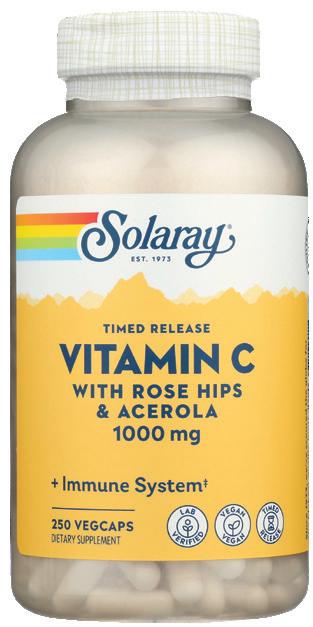
mg
Provides antioxidant activity.*
Intended to help support normal, healthy collagen synthesis, capillary and blood vessel integrity, and immune function.*
Two stage, timed release formula.

Healthy, humble, and comforting, root vegetables are a foundational ingredient in many a dish. Think potatoes in a hearty stew, carrots as a colorful addition to slaws, and radishes as a crunchy topper on salads.
Root veggies are a nutritious addition to the diet. They provide the body with phytonutrients, vitamins, minerals, and fiber. Once harvested, root vegetables can last a long time when stored in a cool, dark spot.
Crunchy, soft, sweet, mild, or bitter—there’s a root for everyone. Here’s how to shop for and prepare some favorites.
Beets. These are one of the sweetest root vegetables around. Juice, roast, or pickle them. Or enjoy them shredded raw with lime juice, cilantro, and cumin for a tasty side salad. To avoid stained hands when peeling beets, hold them in a paper towel and gently rub off their skins.
Carrots. This colorful root vegetable is best purchased when firm and evenly colored. The versatile carrot can be juiced, grated raw, pickled, roasted, sautéed, or boiled. Baby carrots are actually full-grown ones that were deemed too ugly to sell.
Jicama. This root vegetable is a favorite in Mexican food. Cut jicama into sticks for dipping into hummus, salsa, or guacamole. It can also be grated into slaws and salsas or roasted. You can even juice it or cut it into cubes to add to soups or chilis.
Parsnips. Roast parsnips or add to soups and
stews. Slice them into coin shapes and pan-fry, boil, or mash. Try parsnips shredded in their raw form and add to salads. For an interesting homemade hash, substitute half of the potatoes with parsnips.
Note: Parsnips oxidize quickly after being cut and will turn brown. If not using immediately, submerge in a bowl of water with a little lemon juice or vinegar. Potatoes. Perhaps the most popular and versatile of the roots, potatoes come in many sizes and colors. Potatoes take to just about every method of preparation: roasting, sautéing, boiling, frying, braising, steaming, or mashing. For fluffy baked potatoes, cut an X in the baked potatoes’ tops and squeeze open with your fingers, so the steam can escape.
Turnips. Like beets and carrots, turnips can be purchased with their greens still attached. Sauté the greens with garlic and use them as you would spinach. Enjoy turnips raw—either sliced thin or shredded. They can also be boiled, baked, mashed, sautéed, roasted, or braised. Add cubed turnips to chicken soup. ●
From The Side Dish Bible by America’s Test Kitchen ($35, America’s Test Kitchen, 2019)
1 celery root (14 oz), peeled
4 carrots, peeled and cut into 2½-inch lengths, halved or quartered lengthwise if necessary to create pieces ½- to 1-inch in diameter
12 oz parsnips, peeled and sliced on bias 1-inch thick
5 oz small shallots, peeled Kosher salt and pepper
12 oz turnips, peeled, halved horizontally, and each half quartered
3 Tbsp vegetable oil
2 Tbsp chopped fresh parsley, tarragon, or chives
1. Adjust oven rack to middle position, place a rimmed baking sheet on a rack, and heat oven to 425°. Cut celery root into ¾-inch-thick rounds. Cut each round into ¾-inch-thick planks about 2½ inches in length.
2. Toss celery root, carrots, parsnips, and shallots with 1 teaspoon salt and pepper to taste in a large microwave-safe bowl. Cover bowl and microwave until small pieces of carrot are just pliable enough to bend, 8 to 10 minutes, stirring once halfway through microwaving. Drain vegetables well. Return vegetables to bowl, add turnips and oil, and toss to coat.
3. Working quickly, remove baking sheet from oven and carefully transfer vegetables to baking sheet; spread into even layer. Roast for 25 minutes.
4. Using a thin metal spatula, stir vegetables and spread into even layer. Rotate pan and continue to roast until vegetables are golden brown and celery root is tender when pierced with the tip of a paring knife, 15 to 25 minutes longer. Transfer to a platter, sprinkle with parsley, and serve.

Kitchen Note: Roasted root vegetables develop complex flavors with just a quick toss in oil, salt, and pepper and a stint in a hot oven—until you try to roast different vegetables at the same time. The trick is to carefully prep each vegetable according to how long it takes to cook through. With each vegetable cut into the right size and shape, they can be roasted together in one batch for uniformly tender results. To speed up the roasting, the vegetables are briefly microwaved and then placed on a preheated baking sheet to jumpstart the browning. Use turnips that are roughly 2 to 3 inches in diameter.
Per serving: 166 Calories, 3 g Protein, 24 g Carbohydrates, 9 g Total sugars (0 g Added sugars), 6 g Fiber, 7 g Total fat (1 g sat), 295 mg Sodium, ★★★★ Vitamin K, ★★★ Vitamin A, C, ★★ Vitamin B6, ★ Vitamin B1 (thiamine), E, Folate, Phosphorus, Potassium

During the holidays, we clink glasses to good health, friends, family, and fortune. The oft-touted health benefits of a glass of red wine or other alcoholic beverage feels like a bright light of joy alongside boring go-tos like green leafy vegetables, fiber, and exercise.
But is it really true?
There is no question that excessive alcohol intake is bad for health on almost all fronts, but what about moderate alcohol consumption of one or two drinks per day?
Possible Pros: Past studies have shown a positive correlation between moderate alcohol consumption, heart health, diabetes risk, age-related cognitive health, and longevity. But newer studies question these links, and excessive drinking clearly worsens risks.
Likely Cons:
Cancer: Any amount of alcohol can increase cancer risk, particularly of the liver and breast as well as contact areas (mouth, esophagus) and colon-rectum.
Sleep: While you may fall asleep faster after drinking alcohol, the sleep quality is often reduced, with increased nighttime waking, restlessness, insomnia, morning grogginess, and daytime mood destabilization; modest alcohol consumption may worsen sleep apnea.

Leaky gut and microbiome balance: Alcohol increases inflammation, intestinal permeability (leaky gut), and gut flora imbalance. Even moderate amounts have been shown to aggravate inflammatory bowel disease (IBD).
Weight gain and obesity: When we drink, we consume significant amounts of calories in our glasses. Feeling tipsy also encourages us to eat more food, which worsens with heavier drinking.
The research on moderate drinking isn’t clear, but you may want to consider sticking a little below the recommended “up to one drink daily” (for women) or two (for men), reserving for special occasions, or avoiding altogether.
Instead, fill your fancy glass with bubbly water mocktails with a splash of juice, wedge of fruit, sprinkle of pomegranate, splash of vanilla extract, dash of bitters, or other garnish. ●
more at www.WintergreenBotanicals.com.
SELECTED SOURCES “Alcohol and Sleep I: Effects on normal sleep” by I.O. Ebrahim et al., Alcoholism: Clinical and Experimental Research, 4/13 • “Alcohol use: Weighing risks and benefits,” www.MayoClinic.org, 10/26/19 • “Binge drinking is a serious but preventable public health problem,” 12/30/19 • “Drink alcohol only in moderation,” Office of Disease Prevention and Health Promotion, www.Health.gov, 10/15/20 • “Effects of drinking on late-life brain and cognition” by A. Topiwala and K.P. Ebmeier, Evidence-Based Mental Health, 2/18 • “Facts about moderate drinking,” Centers for Disease Control and Prevention, www.CDC.gov, 12/30/19
There’s so much to celebrate this time of year. Instead of popping open the bubbly for each occasion, treat yourself and your guests to tempting, nonalcoholic party drinks. All it takes is some healthful ingredients like fruit juices, herbs, spices, and natural sweeteners combined with seltzer water for an array of festive and fizzy delights. Keep in mind that you can double or triple the ingredient amounts in these recipes to serve a larger crowd. Cheers!
40 min prep time serves 6
From the Taste for Life test kitchen
1 qt unsweetened apple cider
1 c unsweetened cranberry juice
1 cinnamon stick
1 1-inch piece of peeled ginger, sliced thinly
1 tsp whole cloves
2 Tbsp honey
1 organic orange, thinly sliced (leave peel on)
1. Bring all ingredients, except orange slices, to a boil in a medium pan.
2. Reduce heat to low and simmer for 30 minutes.
3. Using a fine-mesh strainer, strain cider into 6 mugs. Discard spices.
4. Garnish mugs with orange slices and serve.
Per serving: 129 Calories, 1 g Protein, 33 g Carbohydrates, 26 g Total sugars (6 g Added sugars), 1 g Fiber, 9 mg Sodium, ★★ Vitamin C
From the Taste for Life test kitchen
1½ c unsweetened pomegranate juice, chilled
1½ c unsweetened tart cherry juice, chilled
10 min prep time serves 6
3 c lime-flavored seltzer, chilled, divided 1 fresh lime, sliced into thin slices (optional)
½ c pomegranate arils (seeds) (optional)
Ice

1. In a pitcher, combine pomegranate juice, tart cherry juice, and 2 cups of the seltzer.

2. Pour into ice-filled glasses. Divide remaining seltzer among glasses.
3. Garnish with lime slices and pomegranate arils, if desired.
Per serving: 52 Calories, 0 g Protein, 13 g Carbohydrates, 12 g Total sugars (0 g Added sugars), 1 g Fiber, 34 mg Sodium, ★ Vitamin C
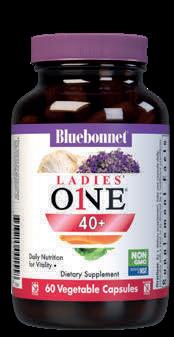










Authentic stone ground sesame butter made with slow roasted sesame seeds.
Rich, velvety, and well balanced. Easy to drizzle, mix, spread, or dip.
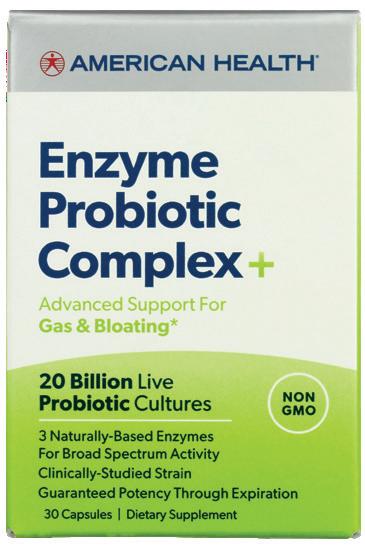
Advanced support for gas and bloating.*
Supplies 3 broad-spectrum digestive enzymes plus 20 billion live probiotic cultures. For digestive support and gastrointestinal wellness.*

Get moisture and shine for body and hair.
Crafted with hydrating coconut oil, jojoba oil, and lavender essential oil. Waterless formula.
Vegan.

Ammonia-free color, inspired by nature.
For radiant color and shine. Leaves hair silky and hydrated. Long-lasting gray coverage.
Gluten digestive enzyme + betaine HCl and targeted probiotics. Protects against hidden sources of gluten.*
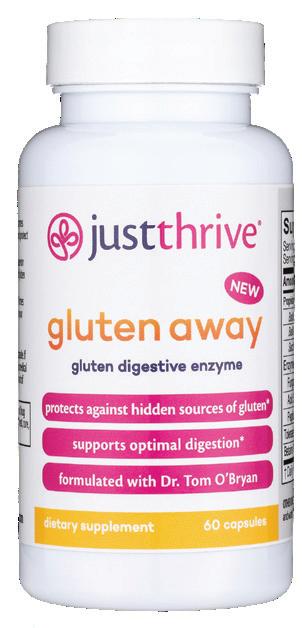
Breaks down gluten before it causes intestinal pain or discomfort.*

Works fast to soothe discomfort associated with nerve pain. Drug-free lotion of super-concentrated pure Epsom Salt (magnesium sulfate). Fortified with arnica, capsaicin, and aloe vera.

Raw, nutrient-rich, multipurpose body oil. Helps support skin that is dry, cracked, sensitive, and has eczema or psoriasis-like symptoms.
Perfect for everyday use for all skin types.
Reusable rounds that feel like regular cotton rounds when wet. Contains 1 case + 7 reusable rounds. Replaces 1750 singleuse rounds.
